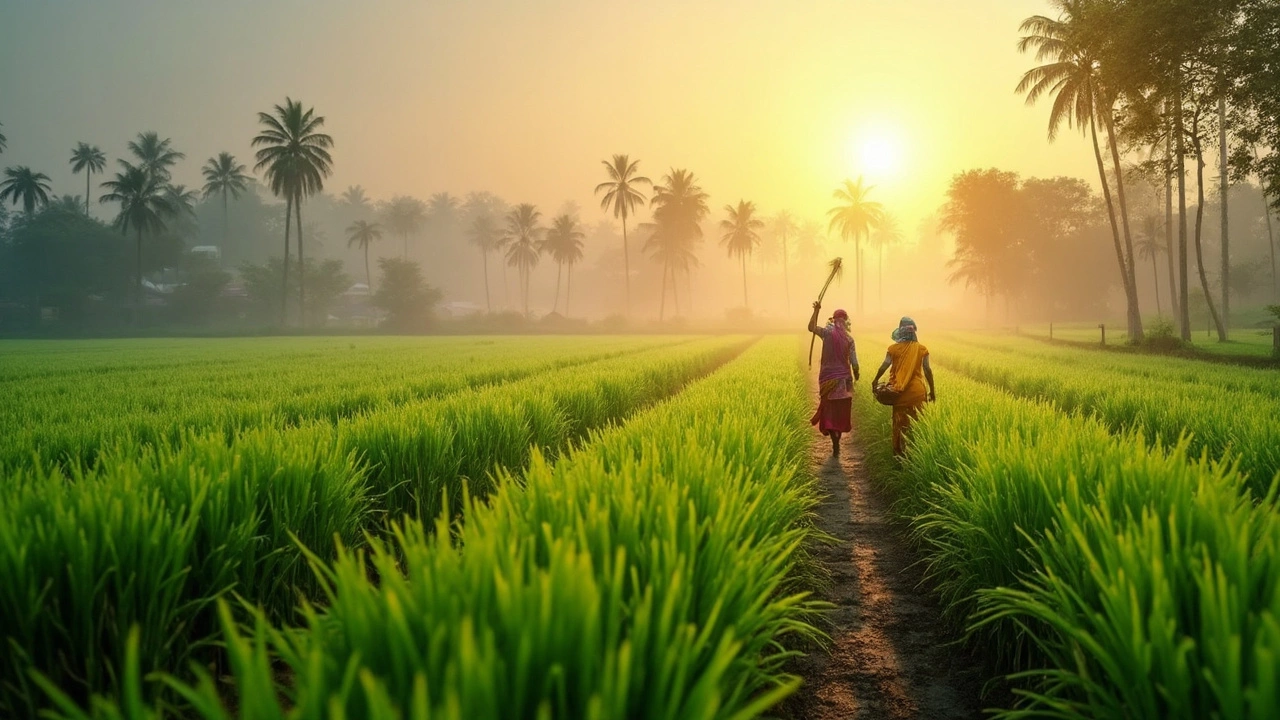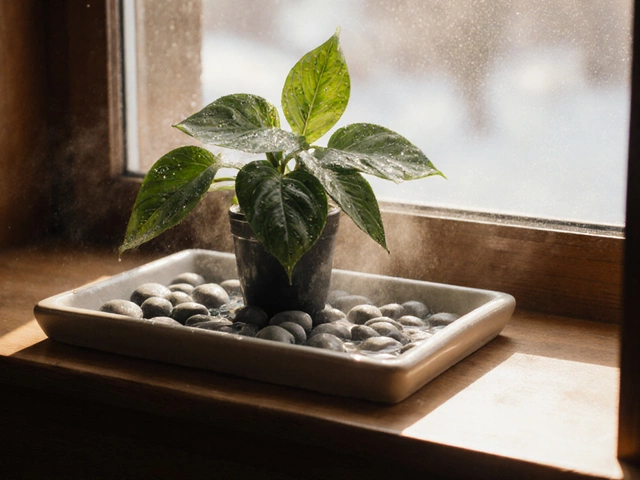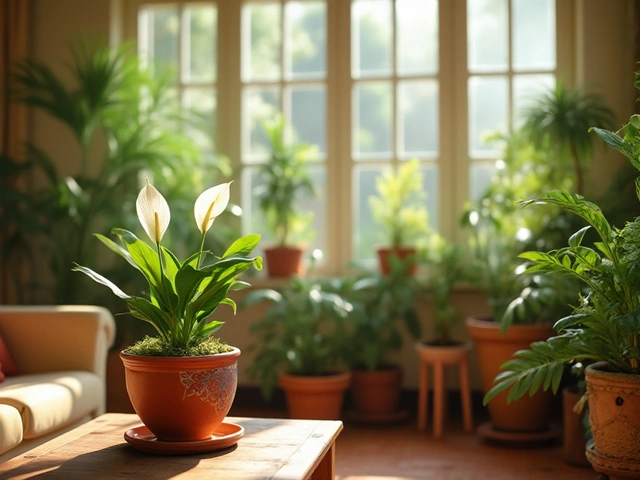If you’ve ever watched a rice field turn from flooded green shoots to golden grain, you might've asked: once cut, will those rice plants just come back next year? Or do farmers have to start all over from scratch?
Here’s the thing—most rice grown around the world doesn’t grow back every single year by itself. It’s usually treated as an annual crop. That means farmers plant seeds, watch them grow, harvest, and then prep the field to plant again next season. But, there’s a twist. Some farmers squeeze an extra harvest out of that same field without starting from zero. They use something called ratoon cropping, which means after the main harvest, those stubby rice stumps can sprout new shoots and grow a bonus crop—if the weather and water cooperate.
Not every type of rice, field, or climate works for ratoon cropping, but when it does, it cuts down on planting costs and labor. There are also special varieties of perennial rice that regrow on their own and last for several years, but they’re not widely used yet. Most of what you eat comes from annual rice that needs to be replanted every time.
- How Rice Plants Grow and Mature
- What Happens After Harvest: Ratoon Cropping
- Annual vs. Perennial Rice Varieties
- When Can Rice Regrow Naturally?
- Practical Tips for Rice Regrowth in Your Field
How Rice Plants Grow and Mature
Figuring out how rice gets from a seed to your dinner plate isn’t complicated once you break it down. Rice starts life as a tiny seed dropped in wet soil or straight into a flooded field (what farmers call a paddy). From there, it follows a clear path of growth, and every stage counts for a solid harvest.
Most rice varieties go through these main stages:
- Germination – Right after planting, rice seeds soak up water, start to swell, and the first roots and shoots pop out within a few days.
- Seedling Stage – Young rice plants focus on growing taller and building up leaves. This part usually lasts three to four weeks after planting.
- Tillering – Here’s where things get serious. Rice plants pump out extra shoots, called tillers. Each tiller can grow its own grain panicle. More tillers usually mean more potential rice per plant.
- Reproductive Stage – The plant now shifts gears. You’ll see panicles (that’s the whole cluster of rice grains) coming out. Flowering starts, and that’s the only window for pollination.
- Grain Filling and Ripening – Once grains start developing, the plant does everything it can to fill them up with starch. The paddies shift from green to golden as the rice gets ready for harvest.
On average, most regular rice types take about 100 to 150 days from planting to harvest. The exact number depends on the variety, weather, and where you’re growing it.
To make all this work, rice likes:
- Warm, steady temps. Around 20-35°C (68-95°F) works best during the growing season.
- Plenty of water, especially early on. That’s why flooded fields are so common—they keep rice happy and weeds away.
- Fertile soils with good nutrients, since rice soaks up a lot during its growth spurt.
If you’re looking at it from a farming angle, every stage has its challenges. Seedlings are sensitive, tillers need good nutrients, and a dry spell during flowering can ruin yields.
| Stage | Days After Planting |
|---|---|
| Germination | 0-7 |
| Seedling | 7-28 |
| Tillering | 28-56 |
| Reproductive (Panicle & Flowering) | 56-90 |
| Grain Filling & Ripening | 90-120 |
Bottom line: rice cultivation isn’t just about tossing in seeds and waiting. Every stage needs the right care if you want a big, healthy yield. And if you’re hoping for those plants to regrow, how well they mature the first time is a huge factor.
What Happens After Harvest: Ratoon Cropping
So, the main crop of rice gets cut, the big machines roll out of the field, and all that’s left are short stalks poking out of the muddy ground. This is where "ratoon cropping" comes in. Instead of pulling up the roots or burning the leftovers, farmers let those stubs sit. If conditions are right, new shoots—called ratoons—sprout from the old base. These shoots grow fast because the roots are already established.
Ratoon cropping isn’t magic, but it does give rice farmers a handy shortcut for squeezing more out of each planting. Farmers can get a second (sometimes even a third) harvest from the same set of plants. The catch? That second harvest, or ratoon crop, usually gives a lower yield—often about 50-60% of the main crop, though it can vary a lot. Ratoon rice is usually ready to harvest about 30–45 days after the main crop, much faster than starting over from seed.
| Main Crop | Ratoon Crop |
|---|---|
| Time to harvest: 4-5 months | Time to harvest: 1-1.5 months after main crop |
| Yield: 100% | Yield: 50-60% |
Here’s when ratoon cropping usually works best:
- The weather stays warm—rice likes heat and won’t regrow well if it turns cold right after harvest.
- There’s enough water. Ratoon plants need moisture to bounce back.
- Farmers cut the main crop fairly high, so there’s more healthy stalk left for regrowth.
Plenty of rice farmers in places like China, India, and the southern U.S. use ratoon cropping to save time and money on plowing, planting, and seed costs. But it doesn’t work everywhere. In colder climates or places with short growing seasons, those ratoons just don’t get enough time to mature before the weather turns nasty. Disease and pests can also be more of a headache for ratoon crops since the older roots and stubs can carry leftover problems from the first round.
If you really want to make the most of rice regrowth, keeping a close eye on water, nutrients, and field cleanliness after the main harvest pays off. Using ratoon cropping can stretch one planting into almost two harvests, making those muddy fields that much more productive.
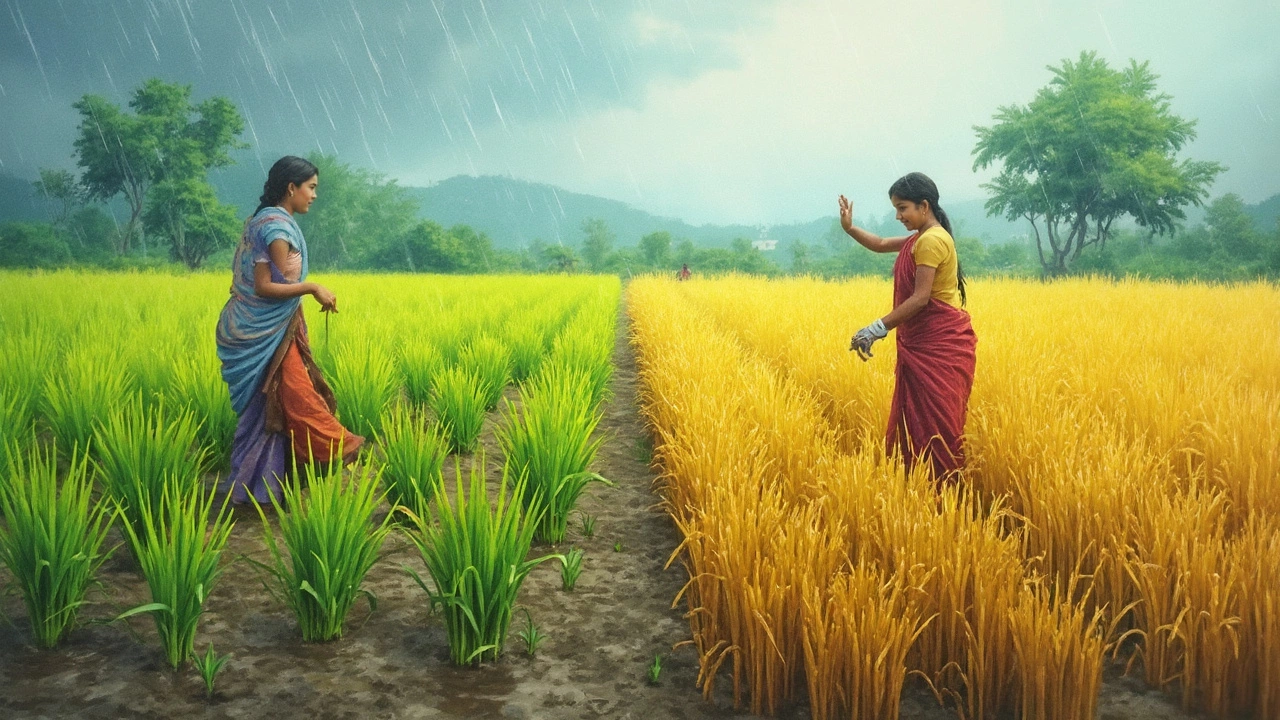
Annual vs. Perennial Rice Varieties
When it comes to rice, the big difference is whether you plant new seeds every season (annual), or let the same plant stick around for years and keep producing (perennial). Most rice you’ll find on the market is the annual type. This means after one crop, the plant’s done and farmers must replant.
Annual rice varieties are popular because they grow fast, give high yields, and can handle changes in weather. Farmers can pick different varieties to match the local temperature, season, and soil. Here’s a look at what sets annual and perennial rice apart:
| Feature | Annual Rice | Perennial Rice |
|---|---|---|
| Growth lifespan | 1 season (about 3-6 months) | Up to 5 years or more |
| Harvest frequency | Once per planting | 2+ times per year |
| Root system | Shallow | Deeper and stronger |
| Main use | Commercial/global | Small-scale or research |
Now, let’s talk about perennial rice. These varieties can survive and produce new crops for several years without replanting. The International Rice Research Institute (IRRI) and Chinese scientists have developed types like PR23 and Yanong 1, showing that fields can produce rice harvests for up to five years straight. Imagine the time and labor that saves—less plowing, less seeding, even less fertilizer and water in some cases. Perennial roots armor against erosion, which is helpful for hilly or flood-prone farmland.
That sounds incredible, but there’s a catch. Perennial rice varieties aren’t grown everywhere. They’re still kind of new, and not all regions have the right conditions for them—think climate, soil bugs, and the need for reliable seed sources. Plus, a lot of perennial types just don’t produce as much grain per harvest as their annual cousins. So if you’re after high yield for big markets, annuals usually win.
- Annual rice means higher yields per harvest.
- Perennial rice reduces replanting costs and helps soil health.
- Most of the world’s rice fields grow annual varieties, but perennial rice is growing slowly in places where it makes sense, like difficult terrains or farms with labor shortages.
If you’re thinking about switching up your rice planting, weigh the benefits and the downsides, and check if any perennial types are tailored to your region. For most farmers today, rice regrowth is still about smart timing and field management, not just leaving plants to do their thing year after year.
When Can Rice Regrow Naturally?
So, will rice just pop back up on its own after harvest? Here’s the deal: most regular rice isn’t your backyard grass. But, under certain conditions, rice can regrow and give you a surprise second crop. This is mostly thanks to something called ratoon cropping, where the leftover stubs in the field—called stubble—send out new shoots. It’s a smart trick, but only works in specific situations.
For natural regrowth to happen, you usually need:
- The right rice variety: Some types are just better at bouncing back, while others won’t shoot new stems at all after they’re cut. Jasmine and some hybrid rice varieties tend to be more vigorous for regrowth.
- Good weather: Warm temperatures and no frost are a must. Rice won’t even try if it’s too cold or if there’s a big dry spell.
- Plenty of water: Most ratoon crops need the fields to stay moist. Dry soil means dead stubble, and that means no second shot at a harvest.
- Not harvesting too low: If you cut the stalks too close to the ground, there’s nothing left to regrow. Most farmers leave about 15-20 cm of stubble.
Countries like China, India, and parts of the southern U.S. use ratoon cropping when the weather is warm enough and there’s still time before colder months set in. Usually, the second crop is smaller—maybe half the yield of the first—but it takes less work since there’s no replanting needed.
Now, if you’re talking true “regrows every year” without any effort, you’d need a rice regrowth variety called perennial rice. These are still pretty new outside of experimental farms. Perennial rice survives winter and shoots back up for several years straight. But in most fields today, farmers mostly stick to annual rice and may just coax out an extra ratoon crop if they’ve got the right setup.
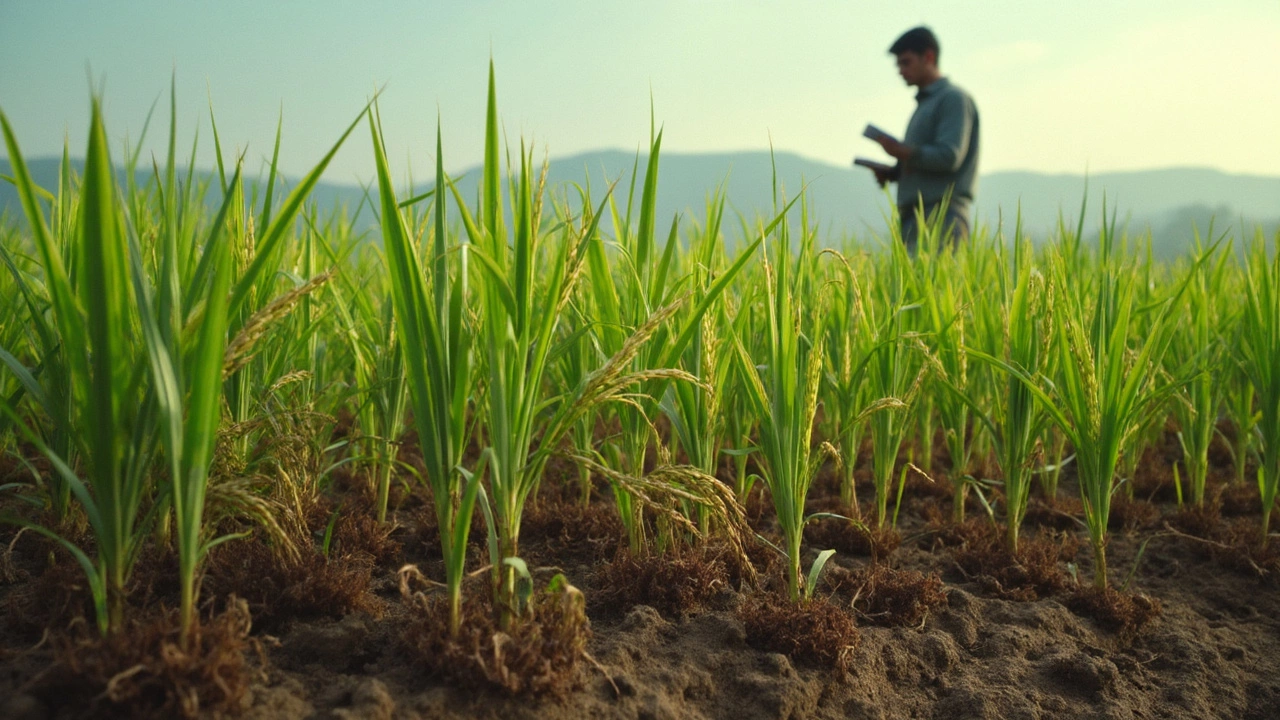
Practical Tips for Rice Regrowth in Your Field
If you’re hoping to see your rice sprout again after the main harvest, there’s some planning involved. Regrowing rice isn’t just about leaving the stubble and crossing your fingers—it takes a bit of know-how and the right conditions. Here’s how you can get the most out of that leftover rice stand.
- Rice regrowth works best when you leave about 15-20 cm (6-8 inches) of stem stubble after the main harvest. Cut too low and the plant won’t have the energy to push out new shoots; too high and it struggles to stay upright or produce strong tillers.
- Ratoon (regrowth) rice likes it warm and wet. Keep your field moist after harvest, especially for the first two weeks. Dry fields slow down or kill the secondary growth.
- Not all rice varieties regrow well. Some high-yield hybrids or improved varieties can push out a solid ratoon crop, but classic or traditional varieties often perform better for regrowth, especially in parts of Asia and Africa. Want to see if your variety is up for it? Ask your local extension service or a nearby successful farmer.
- Add a light dose of nitrogen fertilizer after the main harvest. This helps the ratoon shoots get off to a strong start, but don’t go overboard—too much fertilizer can actually invite pests or make the regrowth weak.
- Keep weeds and pests under control. Ratoon crops are more exposed and usually weaker than the main growth, so even a mild weed or bug problem can tank your yield.
Want some real numbers? Check out this quick look at how ratoon cropping compares with the traditional single harvest:
| Method | Average Yield per Hectare (Main Crop) | Average Yield per Hectare (Second Crop/Ratoon) | Total Potential Yield |
|---|---|---|---|
| Standard Replant | 5–6 tons | 0 | 5–6 tons |
| Ratoon Cropping | 5–6 tons | 1–3 tons | 6–9 tons |
The biggest limiter? Weather. Ratoon cropping is risky if you’re heading into cooler or dry months. In hot regions with reliable late rains, you’re in luck. Some farmers in southern China and parts of Texas double their rice without a lot of extra work by using ratoon methods.
One last thing: don’t use heavy machines for the second harvest. The stubble is short and tender—the lighter you go, the less chance you have of smashing future growth.
